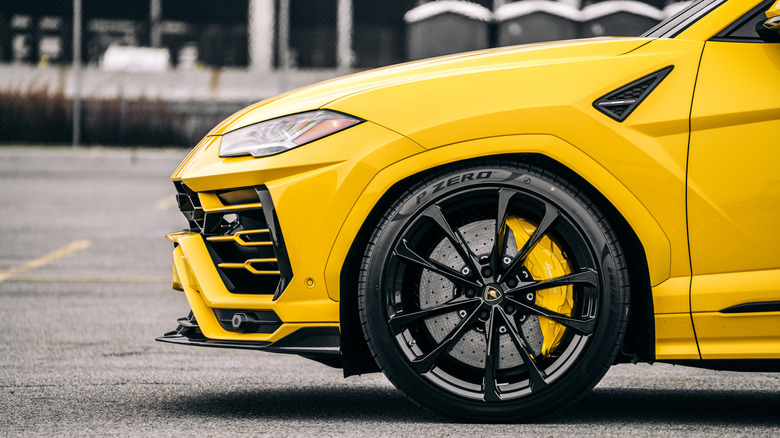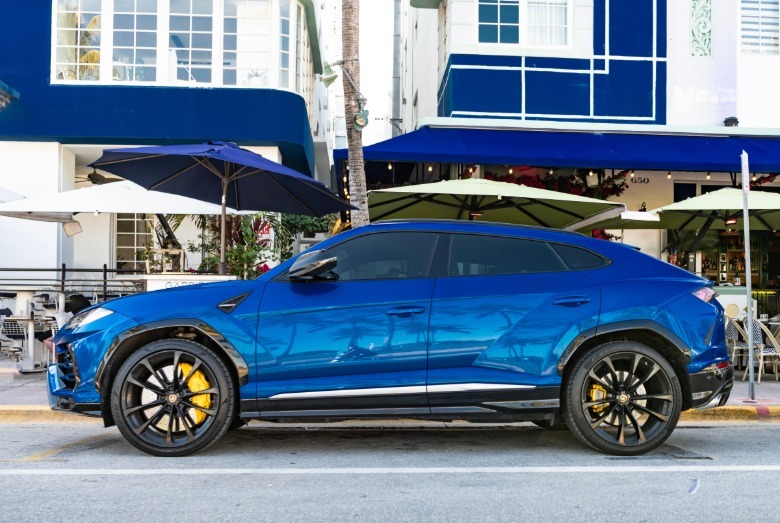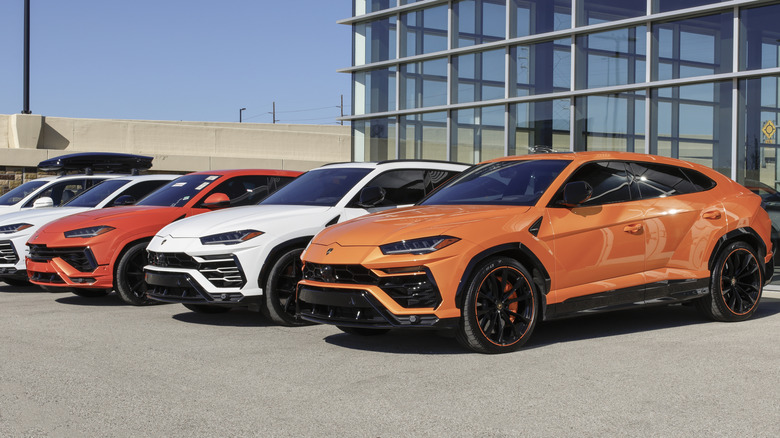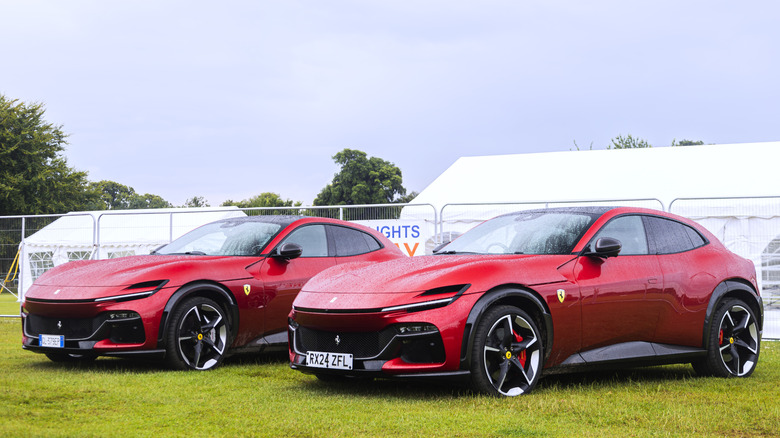This Super SUV Has The Largest Brake Rotors In The World — Here's How Quickly It Can Stop
The Lamborghini Urus is one of the fastest production SUVs on the market today. One of its latest iterations — the Urus Performante — can hit 60 mph (97 kph) in 3.0 seconds, and blast past the quarter-mile marker in 11.3 seconds at 121 mph (195 kph). The SUV will continue accelerating under a heavy throttle foot until it maxes out at 190 mph (306 kph) top speed.
However, performance vehicles are not just about eyeball-sucking acceleration or mind-numbing speeds. Just as important is how quickly they can scrub off all that momentum. For that task, the Lamborghini Urus comes well-equipped: The super-SUV from Italy boasts the largest brakes ever fitted on a production vehicle.
At the front, the massive carbon-ceramic brake rotors have a 440mm diameter and 40mm thickness, with a 10-piston brake caliper setup. The rear discs are slightly smaller, with a 370mm diameter and 30mm thickness. The brakes sit within 21-inch wheels, and are custom-built by Lamborghini. For comparison, the 2025 Aston Martin DBX has 420 mm diameter brake discs up front, and 390 mm discs at the rear. The Ferrari Purosangue utilizes 398 mm ceramic brake rotors at the front, and 380 mm rotors at the rear.
Armed with such formidable stopping power, the 5,314-lb (2,410 kg) Urus can go from 62 mph (100 kph) to a dead-stop in only 33.7 meters. The hardcore Urus Performante variant is even more impressive, trimming that stopping distance to 32.9 meters. To help put this into perspective, the Huracan Sterrato, Lamborghini's off-road supercar, needs 39 meters to achieve the same feat.
Lamborghini's bold gamble with the Urus
Not too long ago, the idea of a high-performance SUV with supercar DNA seemed almost contradictory. Lamborghini changed all that with the Urus. Though it's not the carmaker's first SUV — that distinction goes to the Lamborghini LM002, but they couldn't be more different. The LM002 was based on a military vehicle; rugged, with a monster V12 shoehorned under the hood. On the other hand, the Urus was conceived as a practical, high-performance daily SUV.
Touted as the first Super Sport Utility Vehicle, the Urus was a high-stakes gamble by Lamborghini, leveraging the shifting market sentiment towards SUVs. It was a move that has paid off massively: The Lamborghini Urus was introduced for the 2018 model year, and it quickly became the automaker's best-selling model of all time.
In 2022, the 20,000th Urus unit rolled off the production line. The following year, the Urus accounted for over 60% of the carmaker's total sales. Lamborghini smartly capitalized on the massive positive reception for the Urus, and the base model has since spawned other variants. There's the Urus S, Urus Performante, and most recently, the Urus SE hybrid.
The idea of super SUVs is gaining traction
The concept of a super SUV is one that's perfectly captured by the Lamborghini Urus: A vehicle capable of conquering mild off-road terrain, while simultaneously delivering supercar-rivalling performance on smooth asphalt. It did not take long for Lamborghini's success with the Urus to attract other carmakers.
In 2021, Porsche launched the Cayenne Turbo GT — a formidable high-performance SUV that can accelerate to 60 mph in a scant 3.1 seconds, thanks to its 650-horsepower V8 engine, paired with Porsche's crisp 8-speed automatic transmission. Aston Martin followed that a year later with the DBX, the carmaker's first-ever SUV, as it seeks a return to profitability.
Even Ferrari couldn't stay away: The Prancing Horse brand famously declared that it had no intentions of making an SUV. That changed with the introduction of the Purosangue, though Ferrari refuses to call the four-door an SUV, instead preferring the term "FUV" for "Ferrari Utility Vehicle." If the reports by Car and Driver are true, Chevrolet is also planning to launch an SUV variant of its Corvette supercar. The super SUV segment, once a niche concept, is rapidly becoming a hotly contested space as these brands flock to capitalize on the strong demand for these high-riding, high-horsepower machines.



